I Ching, Yijing or Zhou Yi
"Oracle of the moon": © 2000 LiSe
 Yi Jing, Oracle of the Moon
Yi Jing, Oracle of the Moon


Hexagram 21
Biting and chewing

Nowadays it has been discovered that making decisions is a question of feelings, rather than rational thinking. In past eras, everyone knew that human thinking was too small, the gods or spirits were the ones who made decisions: man proposes but God disposes.
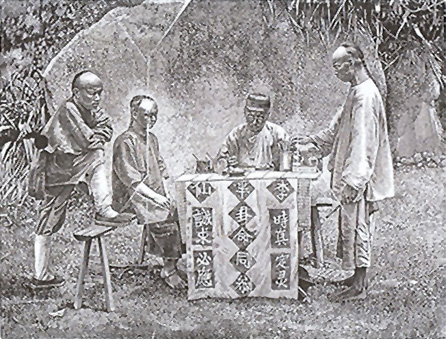
www.bmarchives.org, Chinese diviner.
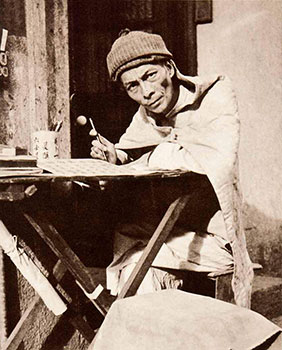
www.periodpaper.com, Chinese street-diviner.
 or
or  or
or 

"Bu shi", divine.
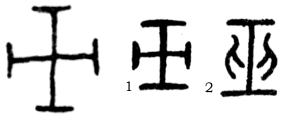
Meanings: magus, mage, shaman, witch, wizard, female shaman; the four Wu1 spirits, to whom sacrifices were made. Corresponding to the four great territories Fang, assistants of the great ancestor Di. Northern -, Eastern Wu, etc. To perform the ritual dance Wu. Wu Di: to perform the sacrifice Di for the (four) Wu spirits.

Hexagram 22
Artemisia, the healing herb
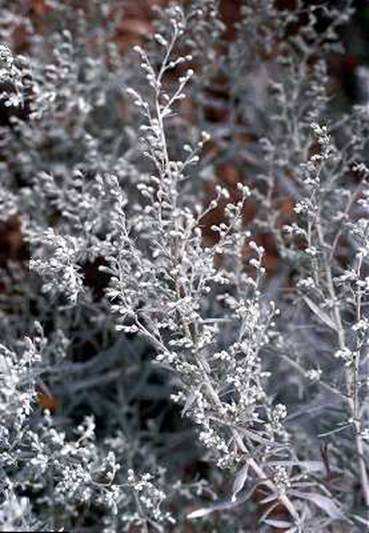
Artemisia
The ideogram is a plant in a pot, but usually there is no flower. Only a stem with leaves.
(BÌ: The character represents a house- or garden plant, which means decoration, brilliant, ornate, to honor.
Pronounced 'ben' it is ardent, brave, energetic. bright, decoration, luminous.
Pronounced ben1: ardent, brave, energetic, strenuous, to forge ahead. Pronounced fen2: great, to express, to make visible.
Pronounced fen4: defeated. Also in an inscription used for a kind of sacrifice).
Pén-pén (same character, other pronunciation): fiery, turbulent, vehement.
In compound characters one finds often older meanings:
With the heart radical added: rage, temper, indignation, resentment, burst forth, surge up.
With man radical: to ruin, spoil, put to flight (army), fight, manifest, reveal.
It seams energy was an important part of its meaning.
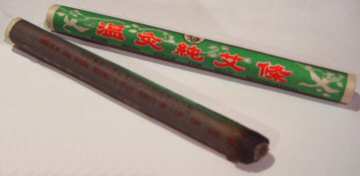
Moxa sticks
The Artemisia family is big, and all members are important in pharmacopy. They are bitter and slightly poisonous. Their most important quality is restoring energy. In several countries their name refers to that: in German Beifuss: it restores the energy of tired feet. Put it in your shoe, and you will not need a carriage: line 1! In English the most common one is Wormwood, but there is no line in the hexagram which refers to healing worm-infections. And neither for its qualities as woman's herb.
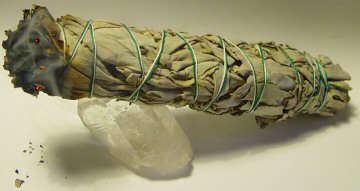
Indian Smudge
In China it was used since ancient times against insects. The smoke as a mosquito repellant, the dry leaves to protect the grain, a decoction for watering vegetables and flowers against aphids and larvae. Its most famous use is in moxibustion. A cone of finely pulverized Artemisia leaves, moxa, was lit on the acupuncture places, which needing activating, to drive out illness. Especially against rheumatism and urinary infections. The powder burns without a flame, but the heat spreads inward and the room fills with its strong aromatic smell. (Source: China, empire of living symbols, by Cecilia Lindqvist).
Artemisia grows easily and everywhere, and it is also used in the culture of silkworms, to make it easier for them to come out of the cocoon (or maybe make them so irritated that they come out pronto). Grow it in the hilltop garden for a small silk harvest??
It is white! Or at least silvery all over, because the leaves are covered with white cotton-like stuff, and it has white flowers. White plain modest wormwood, but look at its workings (line 6)!
Could it be that the ‘beauty’ of hex.22 is the beauty of nature containing its healing qualities? And about the way a plant looks, its beauty, which tells about its powers? The same character can also mean energetic.
In the GuiCang YiJing still another name: Ying Huo. As a word (yinghuo, the two characters together) it means 'to dazzle; confuse, god of war, (astr.) Mars'. But when one looks at the two separate characters, they mean 'glow' and 'mist'. Moxibustion??